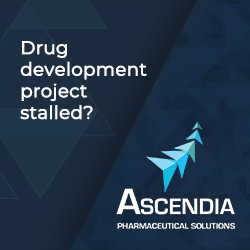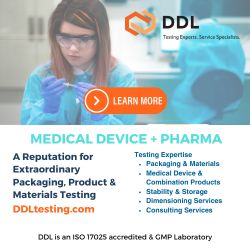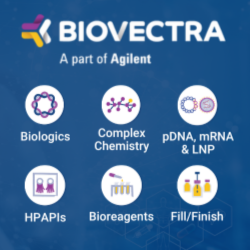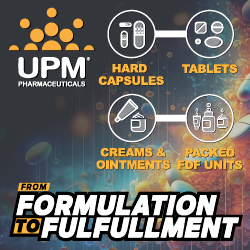Bio Platforms
NurExone Biologic Secures EMA Orphan Status for ExoPTEN in Spinal Cord Injury
NurExone Biologic Inc. recently announced the European Medicines Agency (EMA) has granted Orphan Medicinal Product Designation for the its ExoPTEN therapy, marking a significant step…
PTC Therapeutics Announces FDA Approval of AADC Deficiency Gene Therapy
PTC Therapeutics, Inc. recently announced the US FDA accelerated approval of its gene therapy for the treatment of AADC deficiency, the first-ever gene therapy approved…
Khondrion Receives FDA Clearance of INDA for Pivotal Phase 3 Trial of Sonlicromanol for Treatment of Primary Mitochondrial Disease
Khondrion recently announced it has received clearance from the US FDA for its Investigational New Drug (IND) application for sonlicromanol. The IND supports the initiation…
AC Immune Reports Positive Interim Results From Phase 2 Trial of Active Immunotherapy in Early Parkinson’s Disease
AC Immune SA recently announced positive interim safety and immunogenicity data from the Phase 2 VacSYn clinical trial evaluating ACI-7104.056, its wholly owned anti-alpha-synuclein (a-syn)…
Nxera Pharma’s Partner Centessa Initiates Phase 2 Trial of a Novel Orexin Receptor 2 Agonist
Nxera Pharma Co., Ltd. recently announced Centessa Pharmaceuticals has initiated a Phase 2 trial of ORX750, an investigational, orally administered, highly potent and selective orexin…
Microbiotica Announces First Patient Dosed in its Phase 1b Trial of a Precision Microbiome Medicine in Ulcerative Colitis Patients
Microbiotica recently announced the first patient has been dosed in its Phase 1b First-in-Human trial, COMPOSER-1, of MB310 in ulcerative colitis (UC) patients. This international…
BioNTech to Acquire Biotheus to Boost Oncology Strategy
BioNTech SE and Biotheus recently announced the signing of a definitive agreement for the acquisition of Biotheus, a clinical-stage biotechnology company dedicated to the discovery and…
Nippon Shinyaku & Atsena Therapeutics Enter Exclusive Strategic Collaboration
Nippon Shinyaku Co., Ltd. and Atsena Therapeutics, Inc. have entered into an exclusive license agreement for the commercialization of ATSN-101 in the territory of the…
Entero Therapeutics Announces Proposed Reverse Merger With Journey Therapeutics
Entero Therapeutics, Inc. recently announced it has entered into a binding term sheet for a reverse merger transaction with Journey Therapeutics, Inc. Upon completion of…
CAR T Cell Therapies to Pave Way for Drug-Free Remission in Lupus Care
Bristol Myers Squibb and Cabaletta Bio are set to present promising Phase 1 data on CD19-directed CAR T therapies for severe, refractory lupus at the…
Kane Biotech Announces Agreement to Acquire FB Dermatology
Kane Biotech Inc. recently announced it has entered into a binding term sheet setting out the key terms and conditions relating to the acquisition of…
Attralus Therapeutic AT-02 Receives Orphan Drug Designation for the Treatment of ATTR Amyloidosis
Attralus, Inc. recently announced the US FDA has granted orphan drug designation for AT-02 for the treatment of transthyretin-associated amyloidosis (ATTR), a rare, progressive, debilitating…
Zenas BioPharma Completes Targeted Enrollment of the Phase 3 INDIGO Trial of Obexelimab in Immunoglobulin G4-Related Disease
Zenas BioPharma, Inc. recently announced the completion of its targeted enrollment for the Phase 3 INDIGO trial of its lead product candidate, obexelimab, for the…
Araris Biotech Publishes Foundational Science Behind its Novel Antibody-Drug Conjugate Platform
Araris Biotech AG recently announced the publication of a new technology for ADC generation that supports its foundational technology platform. The publication in ChemBioChem showcases,…
Enlivex Announces Enrollment & Dosing of the First 10 Patients in the Randomized Phase 2 Stage of its Allocetra Trial
Enlivex Therapeutics Ltd. recently announced the enrollment and dosing of the first 10 patients in the randomized Phase 2 stage of the company’s multi-country Phase…
BrainStorm Cell Therapeutics & Pluri Partner to Support NurOwn Phase 3b Trial Manufacturing
BrainStorm Cell Therapeutics Inc. recently announced it has entered into a Memorandum of Understanding (MOU) with Pluri Inc. through its wholly owned subsidiary (Pluri), an…
Indaptus Therapeutics’ Pioneering Research on Novel Immunotherapy Approach Published in Peer-Reviewed Frontiers in Immunology
Indaptus Therapeutics, Inc. recently announced Dr. Michael Newman, Founder and Chief Scientific Officer, has published his groundbreaking research in the peer-reviewed journal, Frontiers in Immunology.…
Can-Fite Achieves Milestone With First Patient Dosing in Pancreatic Cancer Phase 2a Clinical Trial
Can-Fite BioPharma Ltd. recently announced the dosing of the first patient in the Phase 2a clinical trial in patients with advanced pancreatic adenocarcinoma (NCT06387342). “We…
CERo Therapeutics Presents Preclinical Data Demonstrating CER-1236 Killing Ovarian Cancer Cell Lines Without Toxicity
CERo Therapeutics Holdings, Inc. recently announced the presentation of preclinical data demonstrating the capability of its lead compound CER-1236 to kill ovarian cancer cells in…
Transgene & NEC Present New Data Confirming Clinical Proof of Principle for Neoantigen Cancer Vaccine in Head & Neck Cancer
Transgene and NEC Corporation recently announced 24.1 month median follow-up data from the ongoing randomized Phase 1 trial of TG4050 in the adjuvant treatment of head…
What are Bio Platforms?
Platforms (or asset-independent technologies to capture all kinds of capabilities that can be leveraged across many different drug candidate assets rather than just discovery tools that the term ‘platform’ immediately brings to mind) are ubiquitous in modern pharma. They are the product of an arms race, to secure access to the best capabilities in key areas.
Platform technologies are considered a valuable tool to improve efficiency and quality in drug product development. The basic idea is that a platform, in combination with a risk-based approach, is the most systematic method to leverage prior knowledge for a given new molecule. Furthermore, such a platform enables a continuous improvement by adding data for every new molecule developed by this approach, increasing the robustness of the platform.
But it has often been said that access to the latest technological platforms to aid efficient drug discovery and development is limited to Big Pharma, which can more easily justify the costs of creating and operating these platforms.
Benefits of Bio Platforms
Platform technologies have the ability to radically improve upon current products and generate completely novel products. In this sense, they open up new arenas for drug discovery and development, potentially increasing the number of therapeutic options for patients. Once a single compound or therapeutic has been generated and demonstrates a clinical benefit in patients, it is more likely this platform technology can successfully be applied to other therapeutic areas, derisking future compounds/products.
Complex drugs by their very nature are challenging and costly to manufacture. This, in turn, translates into higher costs for patients and other payers. In order to provide safe and effective therapies at a reasonable price, it is necessary for the industry to develop manufacturing technologies that reduce costs and provide a consistent product. While the initial investment may be larger, manufacturing costs will be lower over time as the manufacturing process is solidified.
Scale and Investment of Bio Platforms
Despite the initial upfront costs, platform technologies inevitably provide pragmatic solutions to production challenges, while yielding safer and more effective therapeutic products. It has often been said that one of the key features that distinguishes “Big Pharma” from biotech is access to the latest technological platforms to aid efficient drug discovery and development.
These platforms range from vast chemical libraries, ultra-high throughput screening and huge genetic databases in discovery, to predictive toxicology platforms, cutting-edge ‘omics’ and even deep-seated knowledge of particular therapeutic areas in development. All these platforms have two things in common: They can be used on any (or many) development candidate assets, and they cost huge sums to establish in the first place, and in a few cases each time they are used as well. Hence their restriction to the largest pharmaceutical companies (and a few of the so-called “big biotechs” that are, in many ways, indistinguishable from the old-guard pharma).
Only when you have hundreds of active projects can you justify the cost of creating and operating these platforms. Or so the mantra goes. It is access to these platforms that keeps the big companies ahead in the race to discover and develop the best medicines (or at least counterbalance the disadvantages of being large and slow-moving, depending on your point of view). But is that just an assertion? How much evidence is there to support the proposition that the efficiency gains due to these platforms outstrips the cost of creating and maintaining them?
Keeping these technologies “cutting edge” has become so expensive that increasingly we hear pharma companies talking of “pre-competitive” approaches to develop the next generation. A group of companies might develop a platform capability they then share. The principle goal of such initiatives is to access even grander and more expensive tools than individual companies could afford, rather than to dramatically cut costs (although sharing platforms rather than developing the same thing in parallel in each silo should at least keep a lid on rising costs).
















